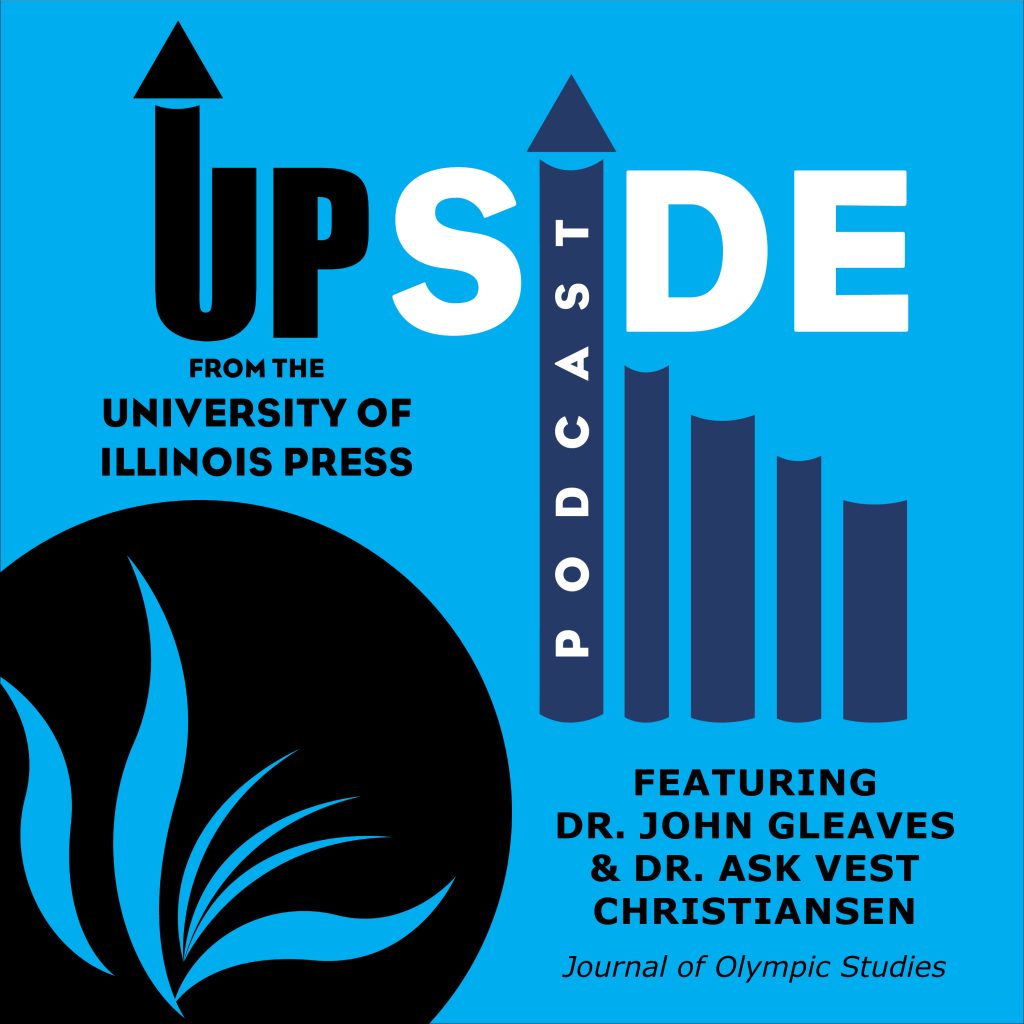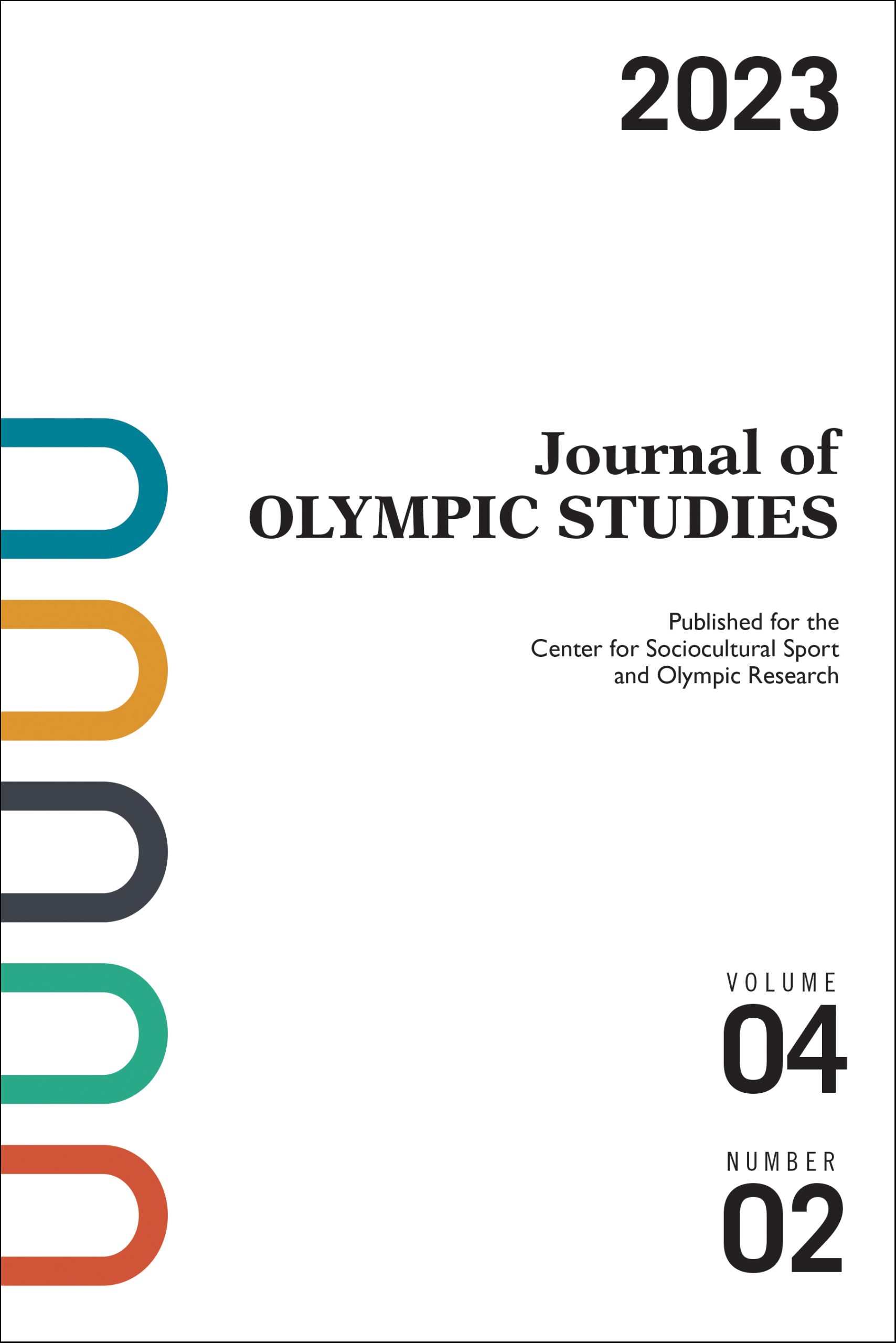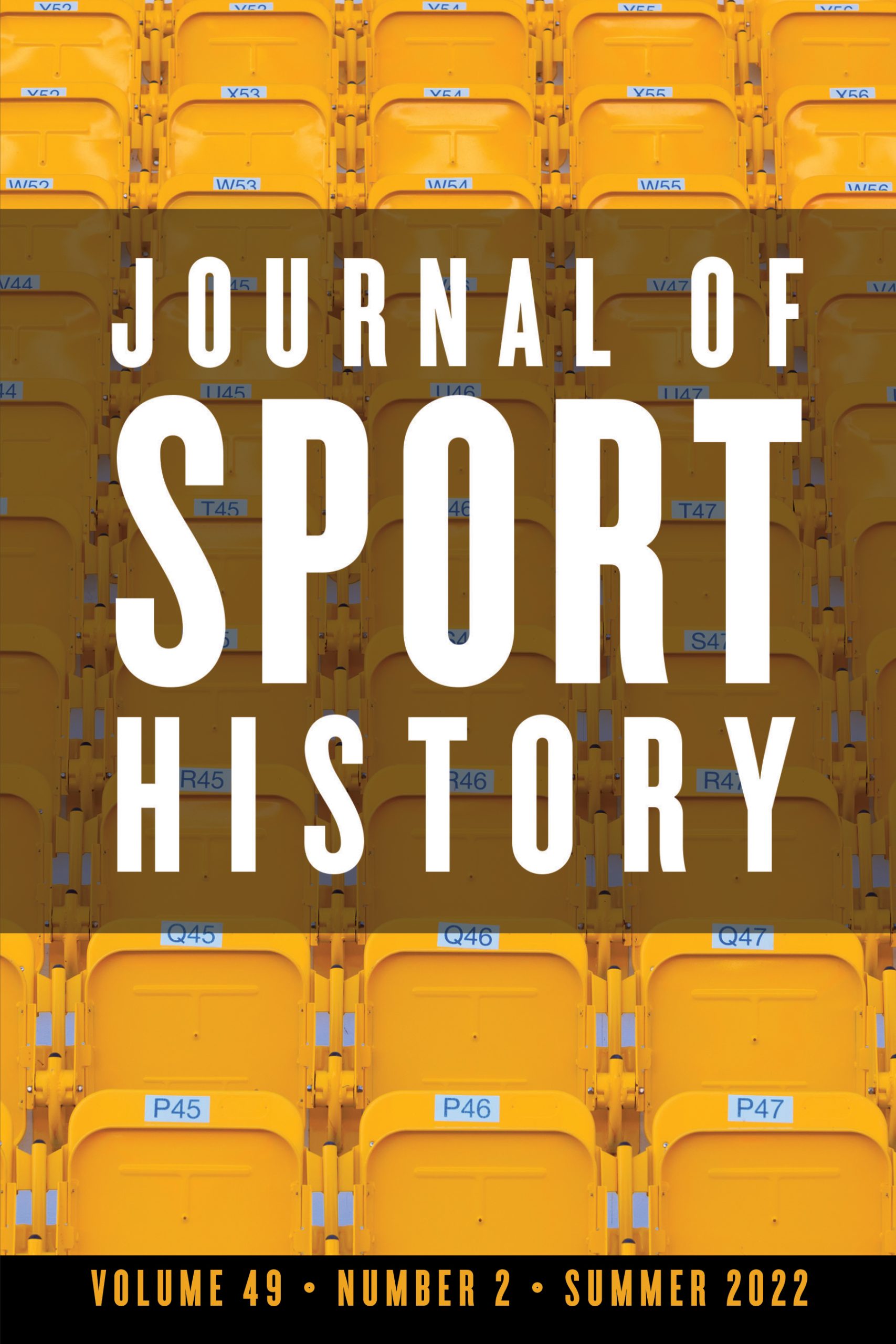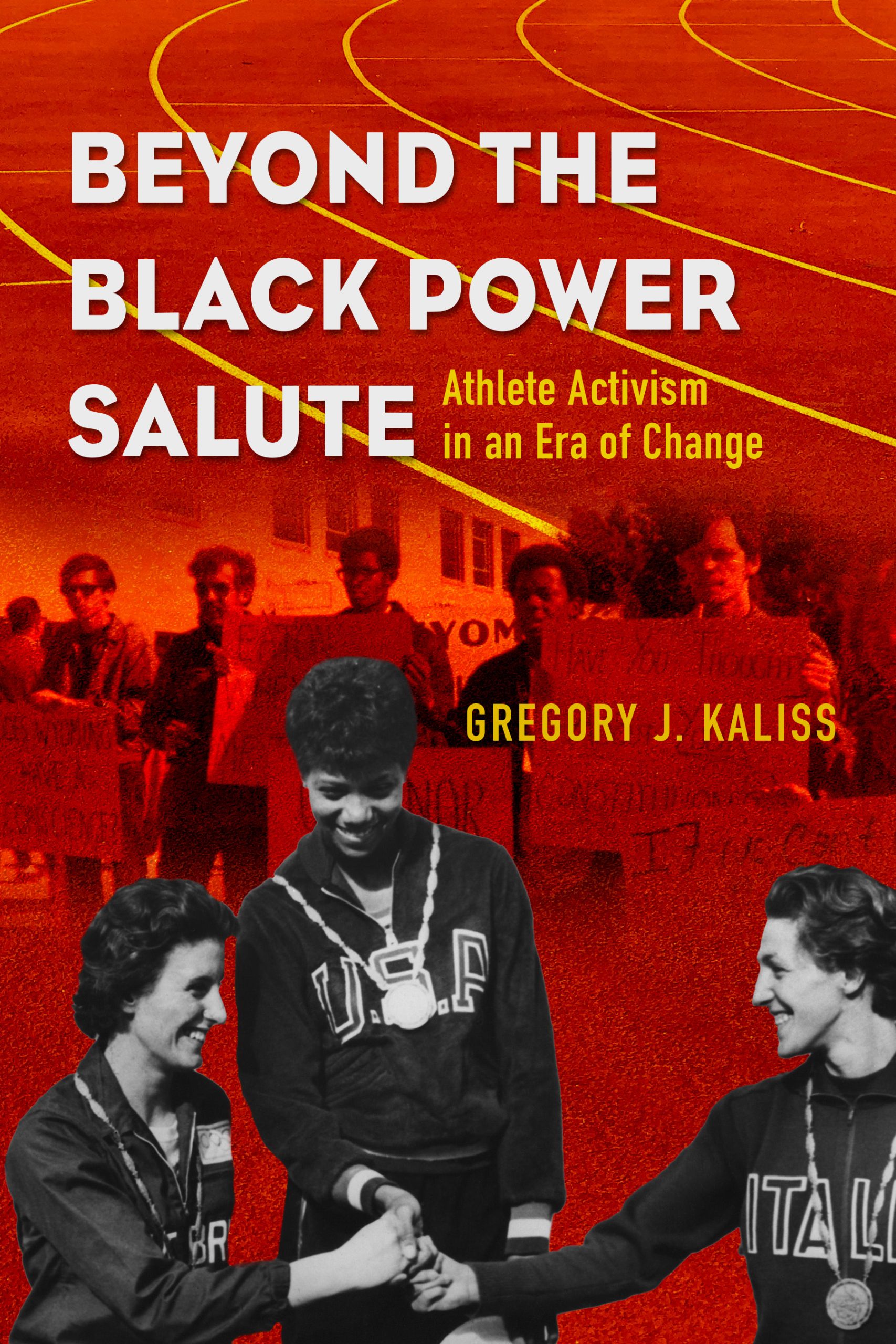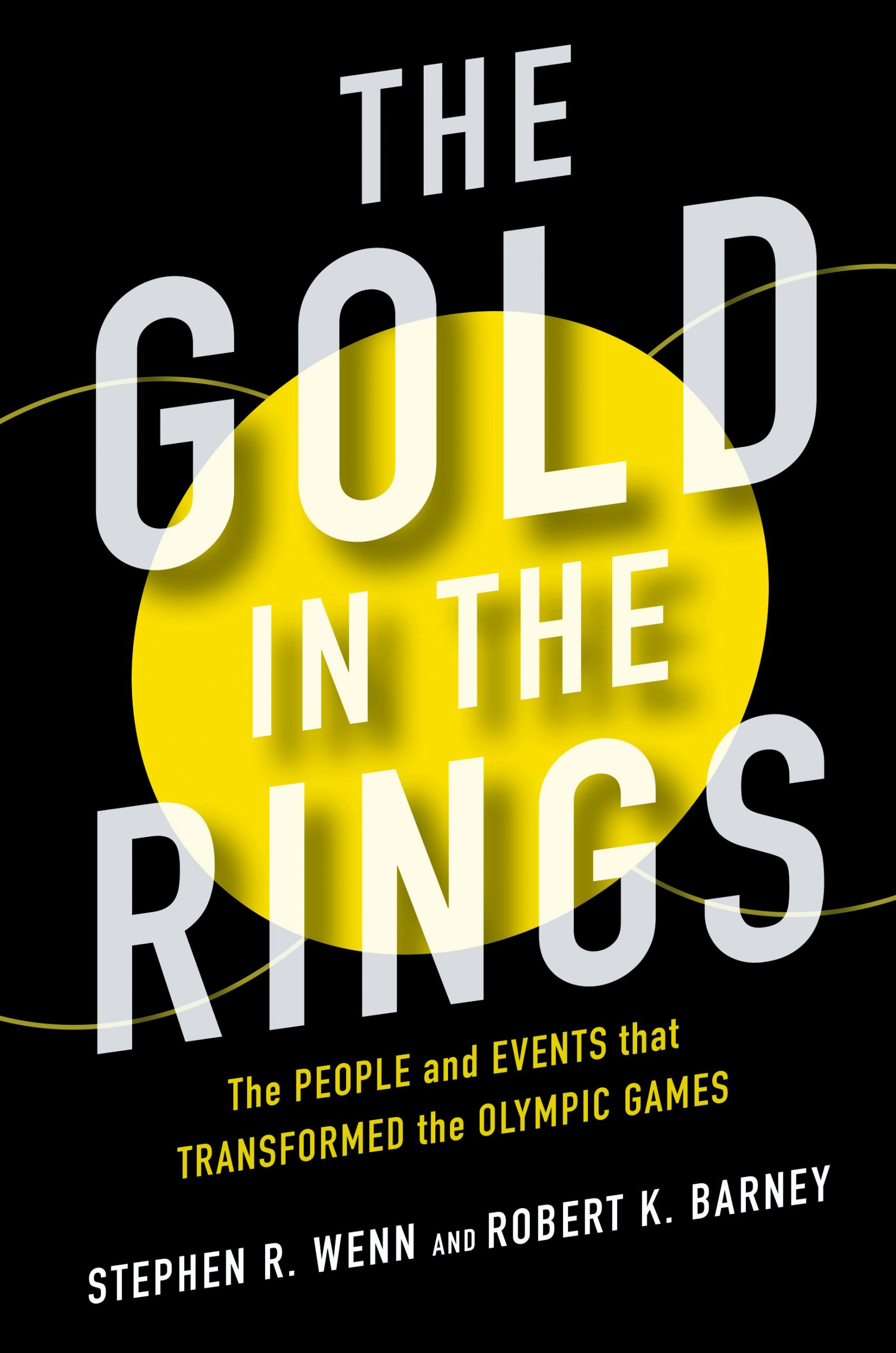In Volume 4, Number 2, of Journal of Olympic Studies, there is a forum on transgender athletes and the Olympic Games. Visit the Scholarly Publishing Collective to view the issue, listen to The UPside podcast for Part One or Part Two, or read the transcript of Part One on our blog, or Part Two interview below.
Michelle Woods (MW): I’m Michelle Woods, Journals Marketing and Communications Manager for the Press, presenting part two of our interview on a forum from the Journal of Olympic Studies Volume 4, Number 2, on transgender athletes and the Olympic Games. Joining me as guest co-host today is Dr. John Gleaves, associate editor of the Journal of Olympic Studies, and the author of the introduction to the forum.
Thanks for being here, John.
John Gleaves (JG): My pleasure.
MW: In case you weren’t able to join us for Part One, I wanted to start by giving a bit of background on the Journal, followed by a brief introduction to the Olympic policies that drove the creation of this forum.
The Journal of Olympic Studies is an international peer-reviewed journal publishing on the Olympic and Paralympic Movements from scholars in fields including history, philosophy, management, communication, classics, literature, anthropology, cultural studies, economics, marketing, and law. You can learn more about the journal—including where to find the latest issue online, how to subscribe to the Journal, and how to submit your work to be considered for a future issue—on our website at go.illinois.edu/JOS or olympicstudies.org.
Now I’ll pass the mic over to John to explain this forum and what brought it about.
JG: The editorial board for the Journal of Olympic studies always keeps up on current events coming out from the Olympic movement, and the framework had been something we’d seen and heard about as it was long developed. But when we finally saw the finished product, it was a bit surprising, as it was a significant departure from the previous documents that the IOC had put out regarding transgender athletes participating in sport.
It also seemed to the editorial board that this was something that had the potential to go in many different ways. It opened up the door for sporting federations to begin making their own choices and it seemed as though it wasn’t clear what was going to happen. It was also occurring at a time in which there was significant focus on transgender athletes in sports.
It was our privilege to reach out to a number of experts around the world, and what we simply asked them for was their reaction, as academics, to this new IOC framework, how they thought it was going to affect sport and athlete inclusion. We’re absolutely thrilled with what these authors have produced. This interview is a great opportunity for us now to ask them some follow up questions about their insights into the IOC’s new framework.
Part One of this discussion, featuring Dr. Veronica Ivy talking about the article “Trans Women Are Women, and Sport Is a Human Right,” is also available now on SoundCloud. But without further delay, let me introduce this episode’s special guest, Dr. Ask Vest Christiansen, author of the article entitled, “The Negligence of Biological Reality.” Ask received a PhD from the University of Southern Denmark and is currently serving as an associate professor of sport science at Aarhus University.
Welcome, Ask, we’re so glad to have you joining us.
Would you like to tell us a little bit about your background?
Ask Vest Christiansen (AVC): Thank you very much for having me. I’m glad I can be part of this. Being an associate professor, I work and teach, research at Aarhus University in Denmark. Aarhus University is Denmark’s second largest university (a top-100 university with 12,000 employees, 32,000 students), which probably doesn’t say much because we are small country. But I teach and research mostly in what we call body culture and sports.
Most of my research has focused on the use of doping and performance enhancing drugs. And we when we make that distinction it’s because doping is really a judicial concept relating to elite sport, while much of the drug use that goes on among recreational athletes doesn’t necessarily fall under the doping category, and therefore it’s better characterized as the use of performance and image enhancing drugs, because that sort of emphasizes the broader motives behind this kind of use. Also, use of drugs and sport is related to fairness in sport, and our perception of what sport is and what sport ought to be.
In that sense, there is a relationship between the research on doping and the topic we are discussing today.
JG: Thanks, Ask. And that’s a great point.
MW: John’s going to get us started today with a question I think we can all agree is deceptively simple:
JG: “What is fairness in sport?”
AVC: Yes, that that might be a deceptive question. I think I would answer that with a really short answer first, and then I will expand on it afterwards. Fairness in sport is playing by the same rules.
We can probably all agree that the rules we have in sport, to some extent, are arbitrary. The lines in tennis could be put elsewhere, and the goals in soccer could have different sizes. But the fact that they are arbitrary doesn’t mean that they are completely haphazard. They are conventions, but they are conventions that we find presents us with a kind of physical test that we agree is meaningful. And at the same time, we also agreed that we should play by the same rules. So, the lines on your half of the tennis courts should be in the same place as the lines on my half and your soccer goal should be the same size as my soccer goal, and so forth.
Now, having agreed that playing by the same rules is a prerequisite for fairness, it may not be a completely satisfactory explanation. Because if that was the only condition for fairness, and the only thing we worked around within sport, we would soon realize that the winners of every competition would be males between 20 and 35 years. When we start thinking about fairness, we also want to make sport fair for 10-year-olds or 50-year-olds, and therefore we start making subcategories that we that we play within. So also, the 10-year-olds and the 50-year-olds get a fair shot at competing and experience success. And by the same token, we actually include more people, because then the 10-year-old find it’s more fun to play, and so do the 50-year-olds. And it is the same logic we extend when we then establish categories for women, and in some sports, we have weight class categories, and we all know the many categories we have in in para sports.
But we could then discuss, perhaps, is that that there’s also a risk embedded in this logic, because we could, by the same token, and the same rationale, extend the number of categories up to any infinite number, and thereby actually making each category meaningless. So, what we have here is that we need to strike the right balance that implies that we have enough categories to make sports fair for different types of people. So, it’s not only the 20- to 35-year-old males that dominate everything, but that also include more people. But at the same time, we do not want an infinite number of categories, because that would make it meaningless.
That that is what embodies fairness, that there must be a good rationale for each category. We need to find a rationale, and since sport (as opposed to much else in modern society) is about bodies and competing bodies, those rationales we have for the categories have mostly centered around bodies and body types. Therefore, we have age categories, weight categories, and sex categories. I’m aware that we also have cultural categories, such as national teams, for instance.
In any case, with these categories, we find that they need to be upheld, or policed, or controlled, in some way for them to be meaningful. For doing that we look after those categories. We find that we need some type of objective criteria for who can enter a category and who cannot. Hitherto, that has also been the case of the categories of the 2 sexes, male and female, men and women. However, it is this latter issue that now has been contested or challenged in later years, and so that sort of be my short, but then very long introduction to what I find with fairness.
MW: Ask, could you elaborate on how this concept of fairness hold up when compared to the guidelines provided by the IOC’s framework?
AVC: When we talk about fairness there is sometimes this tension between people say that everything that does not break the rules is fair, or the other way around, it’s only unfair if you break the rules.
But the problem with that is if people like Veronica Ivy say that it’s absolutely fair that I compete because it says “F” on my certificate, and I compete in the women’s category, and therefore I break no rules, and therefore it’s fair.
But that’s saying fairness is a judicial concept simply, and nothing else—it’s only about legality.
To make an analogy, that would be to say that when Rosa Parks refused to give up her seat on that bus in 1955, she was behaving unfairly because she didn’t follow the rules, but everyone from the outside could say no, it was the rules that were unfair. It was not her behavior that wasn’t fair. My point with that would be to say that just because someone follows the rules is not same as they are behaving in a fair manner.
That’s perhaps another tension in the fairness concept—that is not the same as legality. It’s something different.
JG: As I hear you talk about fairness, I notice underneath that is sort of the other side of the coin, which is advantage. Perhaps we could dive into the performance advantages that trans women may have over biological women, and how this impacts your notion of fairness in sport.
AVC: The advantages trans women hold—they come from biology. When we look across all sports where success in that sport is dependent on power, force, strength, and endurance, we can see that men hold a 10 to 50% advantage over women. It’s 10 to 15% in running, swimming, cycling; 15 to 20% in jumping events; and up to 50% in most strength and upper body–related sport or oriented sport.
At first glance, 10% may not seem to be a lot. But if you take the world record holders in the 10 K running, which is an event that goes on in in an Olympic stadium, from Ethiopia we have Letesenbet Gidey. She has the world record for women in 29?minutes and 1?seconds. On the male side, we have Joshua Cheptegei of Uganda, and he has the male record in 26?min and 11 seconds. That means that if we had them running in the same stadium, when he crossed the line, she would still have 3 laps to go. For an American audience that would mean that we would be well into the commercial break before she even crossed the line. So that’s how much a 10% advantage is. And it is from that that we say that if we want to celebrate women and give women the chance for success, we need to separate those categories.
Obviously in other sports, like team sports like soccer, basketball, or volleyball, it’s much more difficult to measure exactly what the difference is. But at the same time, most have heard stories about local or regional junior men’s teams that have beaten world class senior women’s teams. The fact of the matter is that when the most talented males in, say athletics, when they reach 14 to 15 years of age, they equalize or beat women’s world records. So that is when it happens.
On the other hand, when we look at boys and girls before puberty, they are almost equal in most of the sports where we look. It’s only when puberty kicks in that those large performance differences occur between men and women. That also means that it is not testosterone, the male hormone, in itself that is the cause for the performance differences between males and females. It is rather the exposure to testosterone during puberty that causes biological differences that we see between men and women, which then causes the performance differences we see. So that is the differences we’re seeing between men and women, male and female.
JG: As I look from the outside on this debate, it seems to me a lot of the recent confusion we’ve seen starting in maybe 2021-2022 has come because the IOC, the International Olympic Committee, has changed some of its policies (and it changed them rather quickly for an organization like the International Olympic Committee that’s over 100 years old). They’ve moved their policies rather quickly.
Perhaps you could just briefly summarize how the IOC stance on transgender athletes has evolved over the years, and maybe what’s currently in the framework right now, and I say that knowing that as we sit here in 2023 the policies might look different in 2, 3 years as they continue to evolve.
AVC: Yeah, thank you, John, and so there has, at least since the 1930s, been controversy in the Olympic movement over what some believed to be men dressing up as women, and therefore already in the 1930s that would talk about the introduction of some type of sex testing that could sort of confirm whether we had men that that tried to dress up as women, and therefore, competed in the women’s category. That was, that was actually not the case. Rather it was a case of what we now call intersex athletes or athletes with the difference of sexual development.
So, there was some controversy all through the twentieth century. But the IOC only actually introduced actual transgender regulations in 2003. When they did that back then they sort of had 3 criteria for that: One was that needed to be genital surgery including gonadectomy, as it’s called, where you actually remove the genitalia. The second part was that there needed to be legal recognition of that person, so that that the sex had been confirmed by appropriate official authorities. Third, that need to be hormone therapy that was appropriate for the assigned sex.
That was where the IOC started out, and obviously there was some backlash, especially because of the genital surgery that was needed. Therefore in 2012, I believe it was the IOC revised its rules and regulations.
What was new compared to 2003 was that they now introduced objective benchmarks for testosterone levels in trans women. Before they just said that they should be appropriate. Now they set a limit of 10 nmol/L is sort of that’s the concept one uses here. And then there was the removal of the requirement for genital surgery.
Now that was in place all the way up until November 2021, when the IOC published their framework on fairness, inclusion, and non-discrimination on the basis of gender identity and sex variations. What happened here was that the IOC sort of moved away from a science approach to this issue, so we can all debate whether the 10 nmol/L was the right limit to have, but at least it took its point of the departure, in an idea of what testosterone does and what the level of testosterone does. That was completely removed in the ’21 framework that instead put all its emphasis on human rights and identity. So that’s where the framework came from and why we now have what they call a 10-principle approach to this issue.
JG: So, the 10 tenets, that 10-principle approach, is the heart of your article, and you do an excellent job unpacking that, perhaps, for our audience, help us understand: which of these tenets provide helpful guidance and why are they important?
AVC: If we look at the headlines, I tend to agree with most of them, because there’s a call for inclusion. There is a call for prevention of harm. It talks about fairness and an evidence-based approach. All these things, obviously, I applaud. So, the problem is not in sort of the principles or the headlines of the principles, but rather in how they are interpreted and stipulated in the framework.
Perhaps I can begin with the number one, as they have it in the framework. Number one is called “inclusion”. When you read the first part of it, it’s really hard to disagree with that principle, because it says everyone, regardless of their gender identity, expression, and/or sex variation should be able to participate in sport safely and without prejudice. That is unproblematic and easy to applaud.
Now the problem arises when it doesn’t stipulate that this right doesn’t entail a right to do so in any category of your own choosing. That’s where we get it back to our initial discussion on the categories, and why they, when they want to include, say, 10-year-olds, they also always exclude the 25-year-olds. Being able to take part in sport regardless of gender identity is, of course, good, but it needs to stress that it doesn’t entail a right to participate in any category. That’s sort of when it becomes a little bit shaky for me.
The next tenet I would emphasize is principle number 3: that is called “Non-discrimination”. Again, it starts with what on the surface appears to be completely good and benevolent, because it says that eligibility criteria in sport should be established and implemented fairly and in a manner that does not systematically exclude athletes from competition based on their gender identity, physical appearance, or sex variations.
Again, if this was all, it all would be good and well, because that sounds good. But the framework then goes on to specify that athletes should be allowed to compete in the category that best aligns with their self-determined gender identity. And here’s again, where the problem arises. Because, what the aim of this principle of non-discrimination is, is that it aims to ensure that where eligibility criteria are developed, they are free from discriminatory assumptions about a broad class of people.
Here’s where a problem is highlighted for me, because any of the categories we talked about in the beginning are based on assumptions of a broad class of people. We assume from the outset that 10-year-olds would not have a chance if they were competing against 25-year-olds. We assume from the outset that Olympic heavyweight boxers over 91 kilos would be put in a different category from middleweight boxers, not because we know that all heavyweight boxers are better boxers than any middleweight boxers, but because we deduce from a typical case or broad class of people, and presume that the typical individual that is a heavyweight boxer has a performance advantage over a lightweight boxer. That’s how categories work. They do indeed work with assumptions over broad classes of people. I find that a contradiction in the heart of the framework here.
JG: It seems, if I’m hearing you, that it’s not necessarily one principle that jumps out, but it’s the there’s tensions that you see—some shortcomings in that framework. If we were to bring that back to the question then directly of including transgender women and transgender men in sports, do any of the tensions really jump out at you, such as the need for evidence in order to make any sort of judgment, or the logic of the categories, or the rights of the athletes. Which of these tensions do you find to be the most important?
AVC: Principle number 5 and 6, I see perhaps jumping out as some of the most important ones.
Principle number 5 says “No presumption of advantage”. That is in stark contrast to the 2015 principles or regulations that work from testosterone levels. They might not have hit the right spot with the 10 nmol/L, but they at least they tried. So again, categories are built on the assumption of advantages from one group over another. With this one, where we cannot presume that someone would have an advantage, it introduces what we could call a range view rather than a fairness view.
It basically says that if the performance of a trans woman is within the range of female metrics, then it should not lead to exclusion. But the logic of that is that if you look at the population level, there’s 99% overlap between men and women on performance. So, 99% of all men on the globe would not be able to compete against elite level women, or would be destroyed by them if they did.
In the actual elite, there’s no overlap between males and females. My problem here is that they talk about the presumption of advantage, whereas male advantage is a biological phenomenon, it’s not a presumption or a preconceived opinion. It’s something that is out there. The fact of the matter for me is that we do not simply accept identity as a reason in itself to categorize from, whereas this is what the framework does, a least when we read it like this, with “no presumption”.
It doesn’t get much better with principle number 6 that says we need an “Evidence-based approach” because it makes the science of this virtually impossible. First, it says that that we need an evidence-based approach, and I think that’s an absolutely fantastic idea. Of course, we should do that. But it also says that we can only make regulations on transgender athletes if those regulations are based on robust and peer-reviewed research that demonstrates a consistent, unfair, disproportionate, competitive advantage in performance. And also, that this research should be based on data collection from a demographic group that is consistent in gender and athletic engagement with the group that the eligibility criteria aim to regulate.
To unpack this, it means that if you want to regulate the 800-meter run in athletics, you should have peer-reviewed evidence on transgender athletes that all run the 800-meter at the elite level. It will take many, many years before you would be able to collect data on this. So, there are some problems where we see it looks benevolent in the headline, but when we start to unpack it, there’s a lot of tension and problems in it.
MW: Ask, could you tell us a little bit about testosterone therapy and how that affects this discussion?
AVC: Yeah, if we go back again to the 2015 rules and regulations that the IOC had back then, as we talked about, they built on the assumption that if we regulate testosterone, we will also impact the performance enough to have a level playing field again, to have a fair competition. This was based on an idea that that testosterone is directly responsible for performance.
What we have learned since then, as we talked about earlier, is that what testosterone is responsible for is changing male biology during puberty. This means that from all the studies we’ve seen over the last 10-20 years where a group of people have been given testosterone suppression therapy, we find that the advantages they had as males do not disappear with testosterone suppression. We have discussed studies from 1, 2, 3 years, and some cross-sectional up to 14 years, if I remember correctly, and they all consistently show that what is lost is only up to a maximum of 5% after this treatment. So, it goes to show that the performance advantages that male bodied athletes have is still there even after transition, and after the use of testosterone therapy.
To make a hypothesis, to say, “Whoa whoa whoa, stop, all these studies are only made on the general population. It might not be the same on elite athletes.” As we talked about with principle 6 of the IOC, to say that it should be studies should be made on the same type of population. But to make a hypothesis that says it might be different in elite athletes—that actually ignores what any sports science students knows, namely that with training you can regain and stay at your fitness level much longer than if you don’t train. The hypothesis would actually be the other way around, that if we look at elite athletes, elite trans athletes, their advantage would be larger than what we find in these studies that we have seen.
I think that’s an important part and a good reason for IOC to move away from the 10 nmol/L level. The logic of that is not that we should then go only with gender identity. Rather, it perhaps goes in the direction of what we’ve seen in world athletics, in swimming and in cycling, namely, that if a person has gone through male puberty, then they have that advantage, and then cannot compete in the women’s category.
MW: Thank you for walking us through that. As the discussion on the inclusion of transgender people in sports continues, what are some of the key unanswered questions or areas that require further research and exploration to reach a more conclusive resolution? What would be an ideal outcome or compromise that could address the concerns of both sides in this debate?
AVC: To address the latter part of your question first, I don’t think there is an ideal outcome here. There is no solution that can balance inclusion with fairness. The problem here is that if we want to recognize rights and identity and people’s need to be recognized, it always comes at the cost of another group that then they don’t feel that they are sufficiently recognized. We will not find a solution that is satisfactory for all parties.
But what I think we should address then, is perhaps lines where we could differentiate between sport for all, grassroots sports on the one hand side, and then elite sport on the other hand side, because there’s no doubt whatsoever that sport, physical activity, is good for everyone, and everyone should have access to it. We need to find forms where we can include transgender people in sport, physical activity, exercise, without necessarily saying that they can compete in the category that best aligns with their gender identity. And I think this is a possible thing, that there are some good scenarios how we can do that.
The other thing is that we then can reopen the discussion on categories. Should we have more categories? Should we have less categories? Should we, perhaps—as some philosophers and some sports federations have done—start talking about the women’s category as a closed, protected category, and then stop calling the other category for the men’s category, but call that the open category? That’s where everyone can compete: a little bit like we know from swimming. We have breaststroke, and we have the butterfly. And then we don’t have a breast crawl technique, we have the freestyle. That actually means that we can choose any style we want when we race in the freestyle, but everyone then chooses to the breast crawl style for that. But that’s a possibility.
Another way of thinking about this is to include, but still reserve podium spots for women. What I have in mind here is that in Denmark, when we have the Copenhagen Marathon, that is at the same time the Danish Championships in Marathon. But the winner every year is someone from Kenya or Ethiopia. That is consistent. Obviously afterwards they don’t get the medal as the Danish champion. That is what the best Danish runner gets, so that might be place number 10 or 12 or 15, or whenever the first Dane crosses the finish line. That is also a way to include, but at the same time celebrate. The Marathon here may be an easy way to think of it, and we need to go through how many other sports can do the same. But these are some of the issues that we need to solve as we go forward.
MW: Thank you, that was a helpful example. Before we wrap up, we wanted to express our gratitude to you, Ask, for sharing your insights on transgender inclusion in sports. Your expertise and thoughtful analysis have provided our listeners and the readers of the Journal of Olympic Studies with a deeper understanding of this complex issue. We are truly grateful for your contribution to today’s episode.
AVC: Thank you very much. It’s been a pleasure talking to you and thank you for having me.
MW: Are there any final thoughts you’d like to share, John?
JG: This forum highlights what I think is academia at its greatest. It’s what we can do as scholars to synthesize science, to synthesize ethics, to synthesize personal experience—and to try to make meaning out of what is a very complicated debate.
I’m often disappointed when I read about the topic of trans athletes in the general press, at how uninformed the conversations are, about how they ignore elements of biology, or how they overlook elements of ethics. And what this forum has shown with both of our scholars is the need to have highly informed, nuanced, careful discussion, because often what we think about a topic if we just jump right in isn’t always correct, especially when we’re dealing with marginalized groups that have a history of stigma and discrimination.
Both Ask Vest Christiansen and Veronica Ivy have helped, I think, unpack this debate in a way that shows two scholars, highly informed, that are able to disagree, but also can disagree in a way that is productive, and is driving us forward towards an answer. I think, while all of our scholars have made very different points, as an editor for the Journal of Olympic Studies, it just shows to me the need for us to continue to pursue answers and to bring in the best scholars from around the world to help us understand these issues. Even if we think of them as Olympic questions, or even if we think of them as sport questions, they really are human questions, and they tell us a lot about where we are at as a human species, as a society, where our values are, where we’re going.
This forum really highlights everything that this journal is about, and these scholars have absolutely done themselves credit and shown what it’s like to research and disseminate their findings to a global audience in a way that is incredibly difficult to be done. It is just such an honor and a privilege to have been part of this forum, and to have been able to work with Ask and Veronica in in their both of their expert capacities. I’m looking forward to seeing where this forum goes as it gets shared with the wider public. But I have a strong suspicion this is going to be a highly accessed, highly shared, and highly discussed forum.
MW: Thank you to our guests from both parts of this podcast series, Veronica Ivy and Ask Vest Christiansen, to John Gleaves for co-hosting, and, of course, to you, our listeners for joining us in this conversation. This forum is available in Volume 4, Number 2, of the Journal of Olympic Studies, available in print and online now. To learn more about how to read the issue, subscribe to the Journal, or submit your work for consideration in a future issue, visit go.illinois.edu/JOS or olympicstudies.org.
The Journal of Olympic Studies is part of a robust lineup of sports-related scholarship at the University of Illinois Press. Recently on our podcast, we talked with Robert Sampson, author of Ballists, Dead Beats, and Muffins: Inside Baseball in Illinois and editor of the Journal of the Illinois State Historical Society. We also publish the Journal of Sport History, as well as several books that may be of interest, including: Beyond the Black Power Salute:?Athlete Activism in an Era of Change by?Gregory J. Kaliss and?The Gold in the Rings:?The People and Events That Transformed the Olympic Games by?Stephen R. Wenn and Robert K. Barney. To learn about all of these and more, visit us online at press.uillinois.edu.

